" It is true that when they kill someone. They cure his limbs, fill up calabashes with his fat, which they carry away to their homes; but this is as a trophy a mark of their victory ..."
Jean Baptiste Labat, 1722
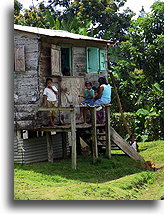
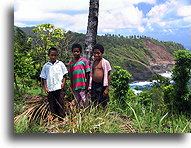
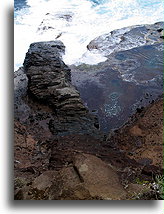
Caribs are Native American people that formerly inhabited the Lesser Antilles in the Caribbean. The name comes from the Spanish Caríbales, or Caníbales and is related to cannibalism practiced by this people. Extremely warlike and ferocious, they used canoes to crisscross large portion of the Caribbean to plunder islands inhabited by the Arawak (Taino) Indians.
Carib men and women spoke two different languages. This was so because women taken as wives by the Carib speaking men were mostly captured in raids and came from the Arawakan language tribes. After European colonization began in the 17th century, Carib Indians were exterminated. Only small pockets of their population survived mostly on the island of Dominica in the reservation called the Carib Territory.
Today, their language is lost; Caribs have no folklore, no songs or music, no dances or customs, no costume or ornament to distinguish them from other inhabitants of Dominica. The only what is left in their tradition are skills in making canoe and waterproof baskets.

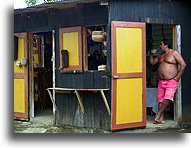
L’Escalier Tęte Chien is a unique stairway-like lava outcrop that resembles a snake. Atlantic Ocean shows its face through powerful waves at this place. This is an important location for Carib Indians and according to the legend it was here that the Master Snake came out of the ocean onto the land. The legend also says that 'when Caribs disappear, the Master Snake has vowed to return to the underbelly of ocean. And the world will end'.
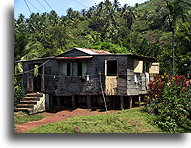
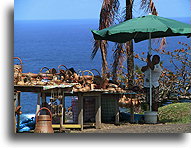
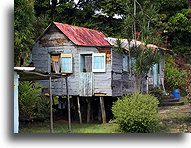
" Their only clothing is that with which nature has covered them. No polity is seen among them; they all live in freedom, drink and eat when they are hungry or thirsty, work and rest when they please; they have no worries, I do not say for the morrow, but for breakfast to dinner, only fishing or hunting exactly what is necessary for the present meal, without troubling themselves about the one after, preferring to get by with little than to buy pleasure of a good meal with too much labour."
Jacques du Tertre, 1667.
Carib Bibliography:
Hulme, Peter and Whitehead Neil L. Wild Majesty, Encounters with Caribs from Columbus to the Present Day.




